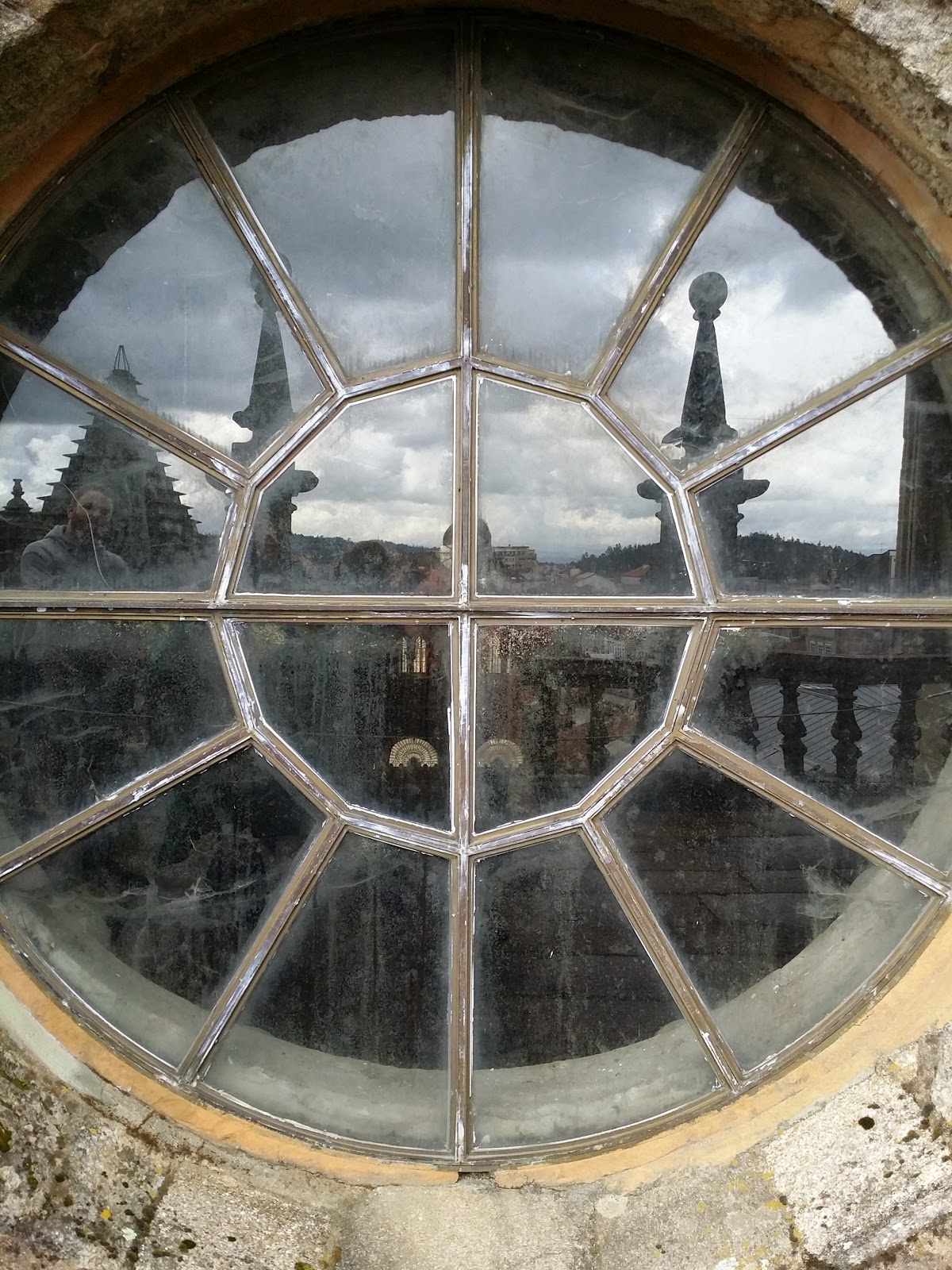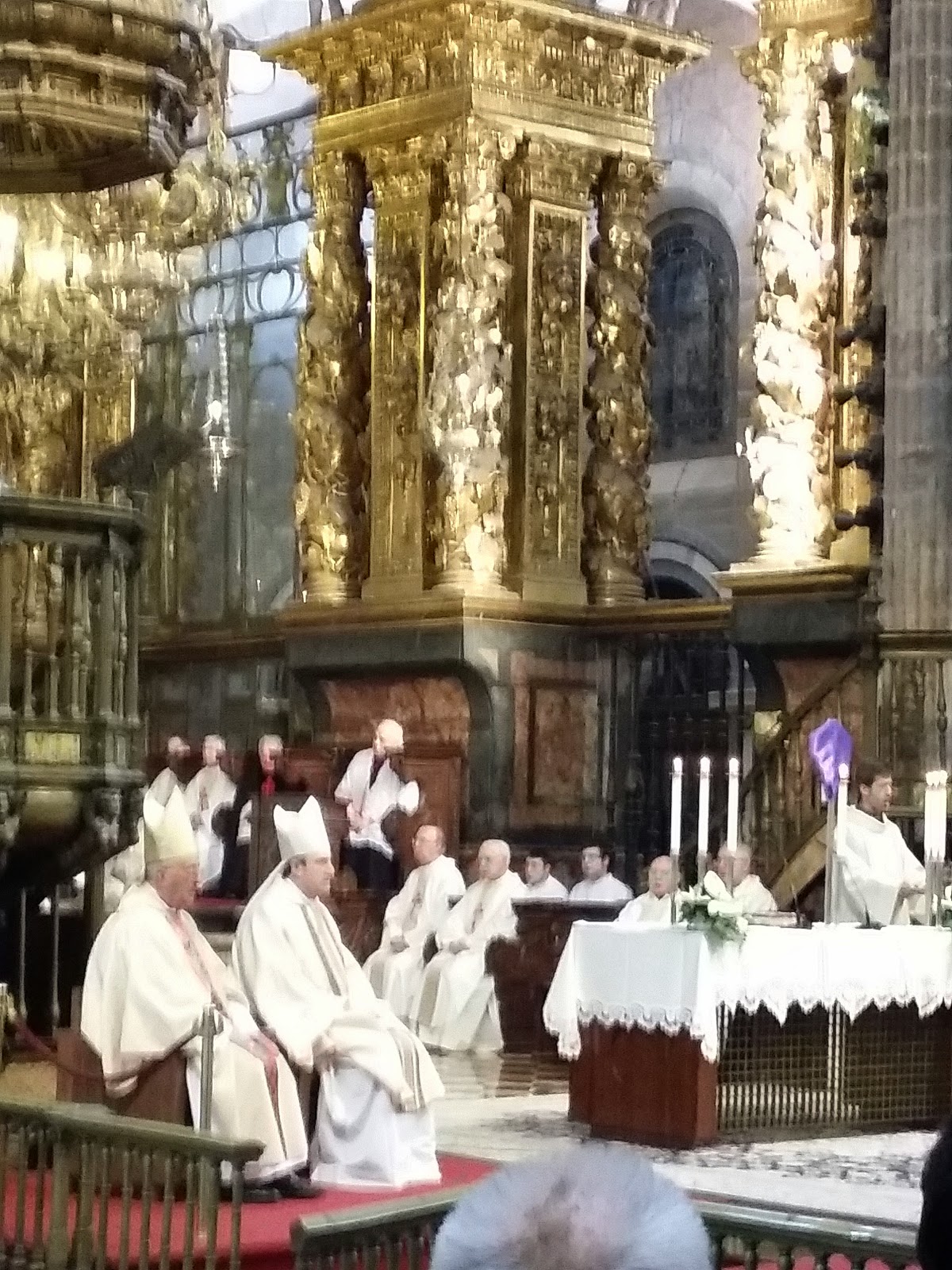Easter is over. It has been a weekend of Semana Santa parades, masses in the cathedral, pondering traditions for celebrating our faith and exploring the streets of Santiago. It is interesting to walk on streets first plotted on a grid over 1000 years ago, to sit in mass and see before me a view which could have been captured by an early pinhole camera or a renaissance artist. Archbishop with staff and mitre before the altar, incense drifting through a sun beam slanting up towards the roof, heads of people in packed rows bent, a mother holding her sleeping child, the ancient glories of the altar glinting in the muted light.
The BEST bit, however, was walking on the ROOF of the cathedral! Yup...there is a tour...it was originally a cathedral/fortress so soldiers had to walk up there. Such a view!
We are leaving Santiago after the Easter weekend. 20th century thoughts intrude. One Facebook friend asks "Did you find what you were looking for?"
In short: yes. Yes I did. I was looking for time simply to place one foot in front of the other, in a simple lived experience of the words "Follow me".
I was looking for time to process some unfinished issues, to allow my soul to catch up with my body as some have put it.
 I wanted to spend time with my husband, just the two of us, with no other demands on us but the needs of the day.
I wanted to spend time with my husband, just the two of us, with no other demands on us but the needs of the day.One of my most frequently repeated phrases these past weeks has been "look where we are!". We have been blessed by the countryside, birds, flowers, and beautiful medieval villages, along with the weather. Even the miserable weather has been full of beauty. Gods creation was rolled out in all its glory before us as spring has arrived. What a gift to winter tired Canadians such as we were. There is something about this gift of time, the physical expenditure, and the spiritual discipline which is a pilgrimage that heals, feeds, restores. It is a lived experience of grace.
Tonight we met with one of our friends from St. Jean Pied de Port, our very first days on the Camino. This journey for her has been life altering: her identity has been shaped through her time on the Camino and those she has journied with. It is wonderful to see the changes in her.
We are grateful to our many companions on this way, and glad that our journey in life includes those who share our lives most of the time: Eric, Vanessa, Jonathan, our families, friends and those who are part if our church family. This journey is but a stretch of a much longer road.... and the walking continues.
Buen Camino! This is the last post.
Adios. Go with God.
Karen.
ps: No James Strachen, we aren't home yet. R+R time, recovering from pilgrimage now
pps: David Crawford...sorry no videos. WiFi here has challenges....
ppps: Eric...we'll see you soon!
















































